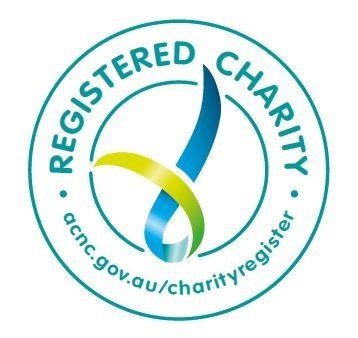It is no secret that our teachers are under the pump. So, what can be done about this epidemic of teachers approaching burnout?

It is clear that in Australia we are losing more teachers than we are gaining each year and they are leaving because of stagnating wages and excessive workload (AITSL, 2022).
Teachers are an instrumental part of our society, providing students with not only knowledge but care, compassion and a role model for their future years. Education has been linked to improving self-esteem, team work skills and occupational outcomes (Hancock et al., 2013). Even though it may be difficult, there are teachers who are using their passion to teach our future generations. Given the somewhat alarming state of the profession, what is helpful for our current passionate teachers to manage what might be the most challenging career of their life?
The cycle that can lead to burnout:
The way teachers relate to the students and the meaning they make from their work can have a positive effect on students in adverse situations (Lavy & Ayuob, 2019). It is well known that teacher engagement is linked to good educational outcomes. However, if a teacher is approaching burnout, they relate poorly to their students, are less engaging, and react poorly to undesirable behaviours in the classroom. This understandable reaction to an excessive workload starts a behavioural cycle where the teacher reacts poorly to undesirable behaviour, which fuels more undesirable behaviour making the days harder (Madigan & Kim, 2021).
How to stop the cycle:
The meaning that teachers make about their own career could be a defining factor in how this cycle starts. Once the reciprocating cycle starts it is up to the teacher and their school to find a way back to a regulated state. They are, after all, the adult(s) in the room who (on top of everything else) are a role model in emotional regulation. The good news is, it's a win-win, if the teacher can find balance they become a more effective teacher and more balanced in their personal life. Given the complexity of the situation, how can we use this idea to create better outcomes for teacher's wellbeing?
The 3 Domains of Teacher Wellbeing
Social Domain:
A survey by the Australian Institute for Teaching and School Leadership (2020) shows that teachers feel they are viewed by society poorly, which impacts the meaning they make in their job, and therefore, their burnout. The survey also shows that when the community was surveyed directly, they saw teachers more positively than the teachers viewed themselves, the media playing a key role in teachers' perception of their role.
To help yourself or a teacher you know; stop listening to the media when it comes to education, they make money off your outrage and are factually inaccurate in their portrayal of public opinion of education. Start complimenting the teachers in your life more - they are usually doing an amazing job.
Organisational:
Teachers have an immense administration workload, and that doesn't include their work with children and youth all day. Organisations must find ways to decrease this workload. This is particularly difficult, leadership in schools are burnt out too trying to balance the needs of the many stakeholders in school.
Let's come back to the idea of meaning making: if the school creates a story around teacher efficacy being linked to teacher wellbeing they can begin to work together on the immense workload and find a collaborative stance to it. Organisations must have support available and advertise it to their staff. It may not be known well, but many schools have Employee Assistance Programs (EAP's) available to teachers (NT schools may even have EASA as their provider!). If EAP's are available but not advertised, teachers may feel a lack of support in their organisation. This is the hardest.
Individual:
If you have an EAP available to you, the power is now in your hands! Contact your provider to start therapy. Therapy is well-suited to help you discover what your job means to you, and to foster that meaning into everyday action at your job making you an effective teacher as a side effect! It's a win-win. Therapy is also well-suited to help you find the work/life balance that is inherently difficult in this career, keeping your cup full for the work you may be passionate about.
The landscape of burnout in teachers is complex. It is clear that we need to keep our teacher's wellbeing high so they can continue to flourish and, in doing so, can become even better teachers. One way is for society (that means you reading and me writing!) to help our teachers understand what they mean to us, they are passionate people trying to help raise our next generation, perhaps we can let them know. Organisations can make clear the support available and work towards easing the administrative workload. Teachers themselves can take steps to bring back some of their wellbeing, through meaning making ro through a break, to not only get their lives back but to become a more effective teacher.
References:
Australian Institute for Teaching and School Leadership. (2022). Spotlight: Building a Sustainable Teaching Workforce.
Australian Institute for Teaching and School Leadership. (2020). Teaching a Valued Profession.
Hancock, K. J., Shepherd, C., Lawrence, D., Zubrick, S. R., Telethon Institute for Child Health Research. (2013). Student Attendance and Educational Outcomes Every Day Counts. Department of Education, Employment and Workplace Relations, (Canberra, Australian Capital Territory).
Lavy, S. & Ayuob, W. (2019). Teachers' Sense of Meaning Associations with Teacher Performance and Graduates' Resilience: A study of Schools Serving Students of Low Socio-Economic Status. Frontiers in Psychology, 10, 823-823.
Madigan, D. J., & Kim, L. E. (2021). Towards an Understanding of Teacher Attrition: A Meta-Analysis of Burnout, Job Satisfaction, and Teachers' Intentions to Quit. Teaching and Teacher Education, 105, 103-425.








